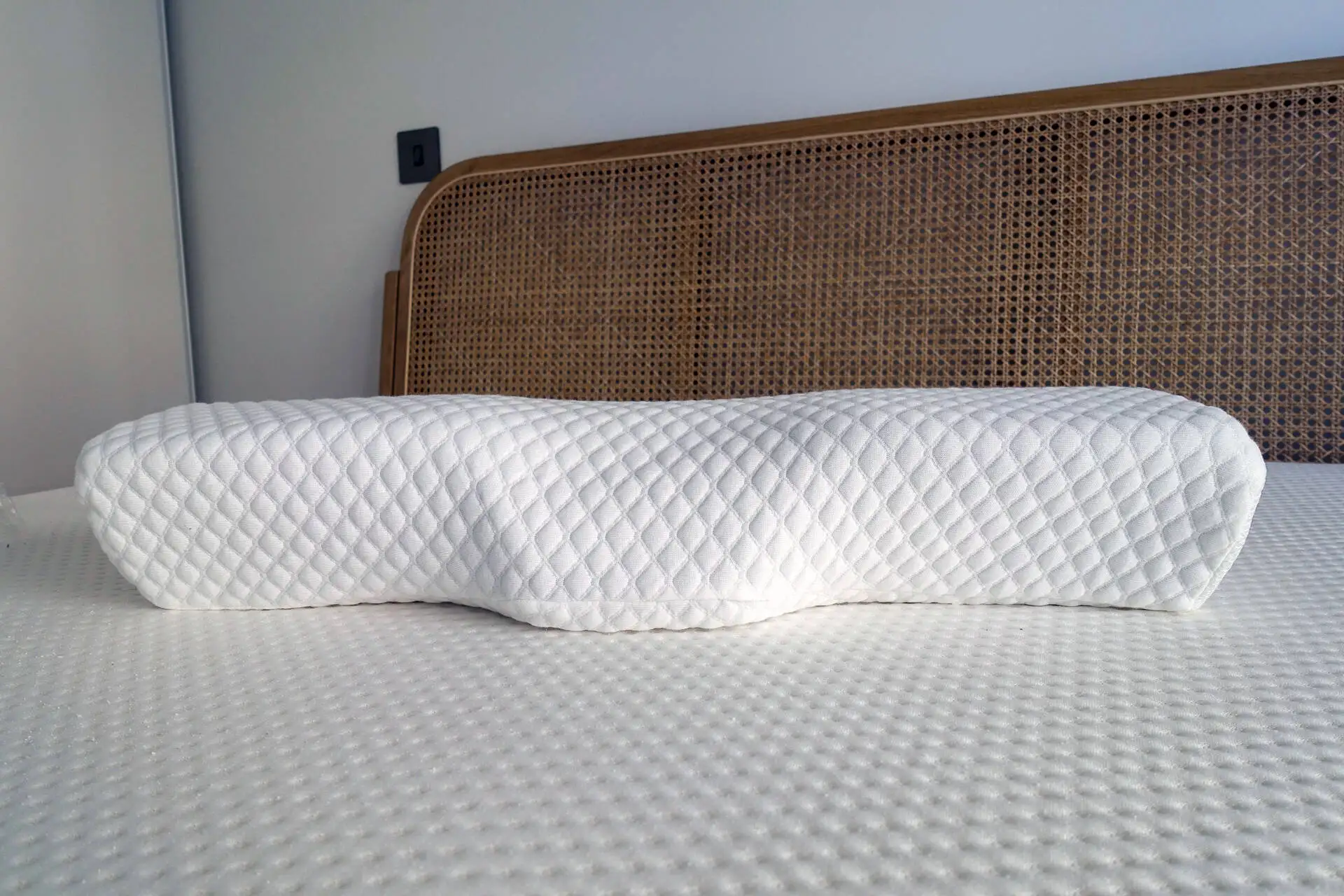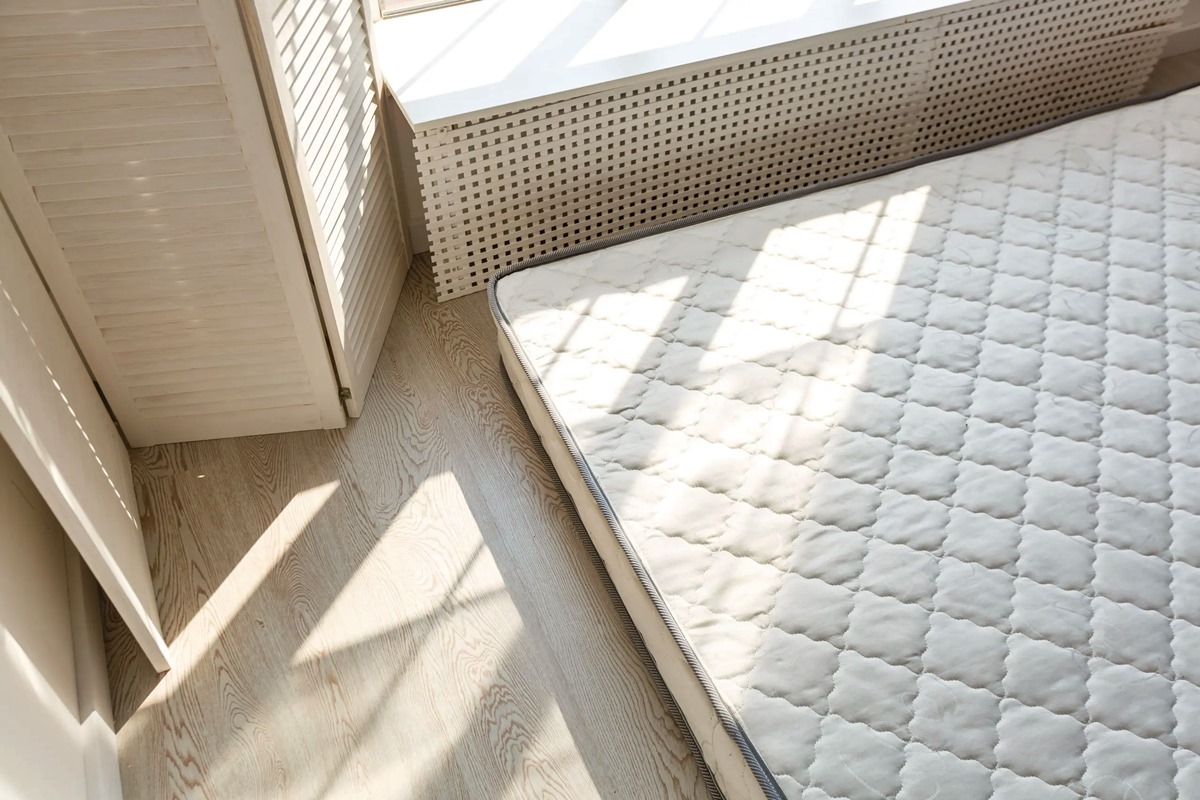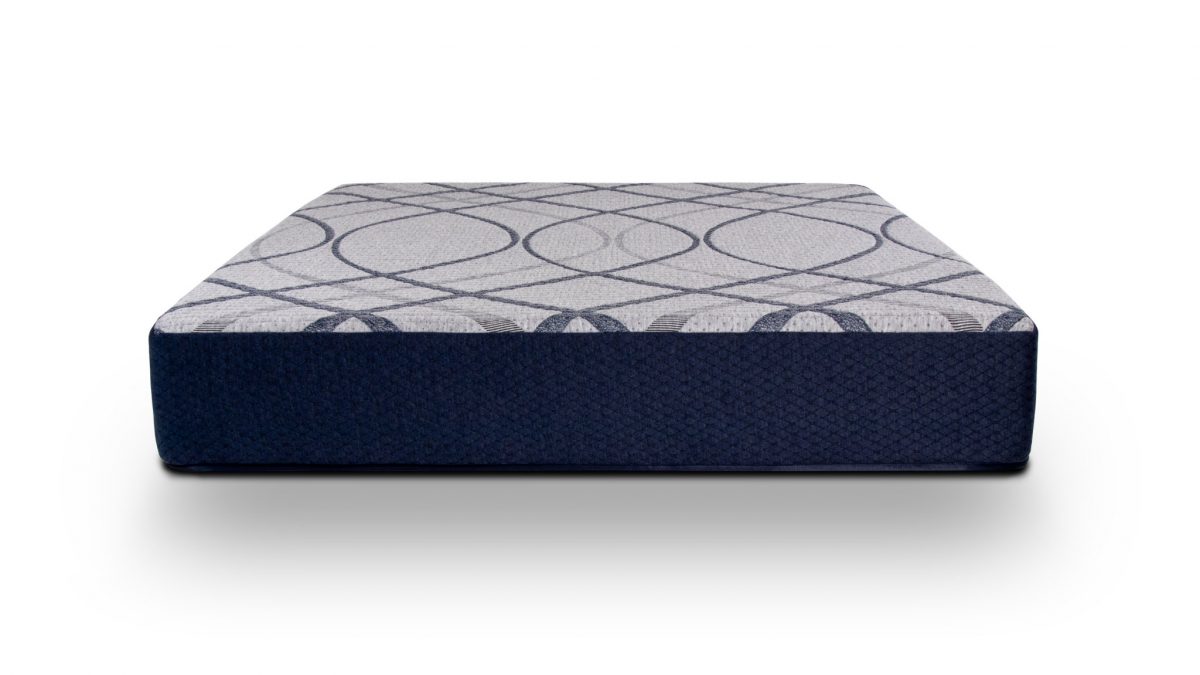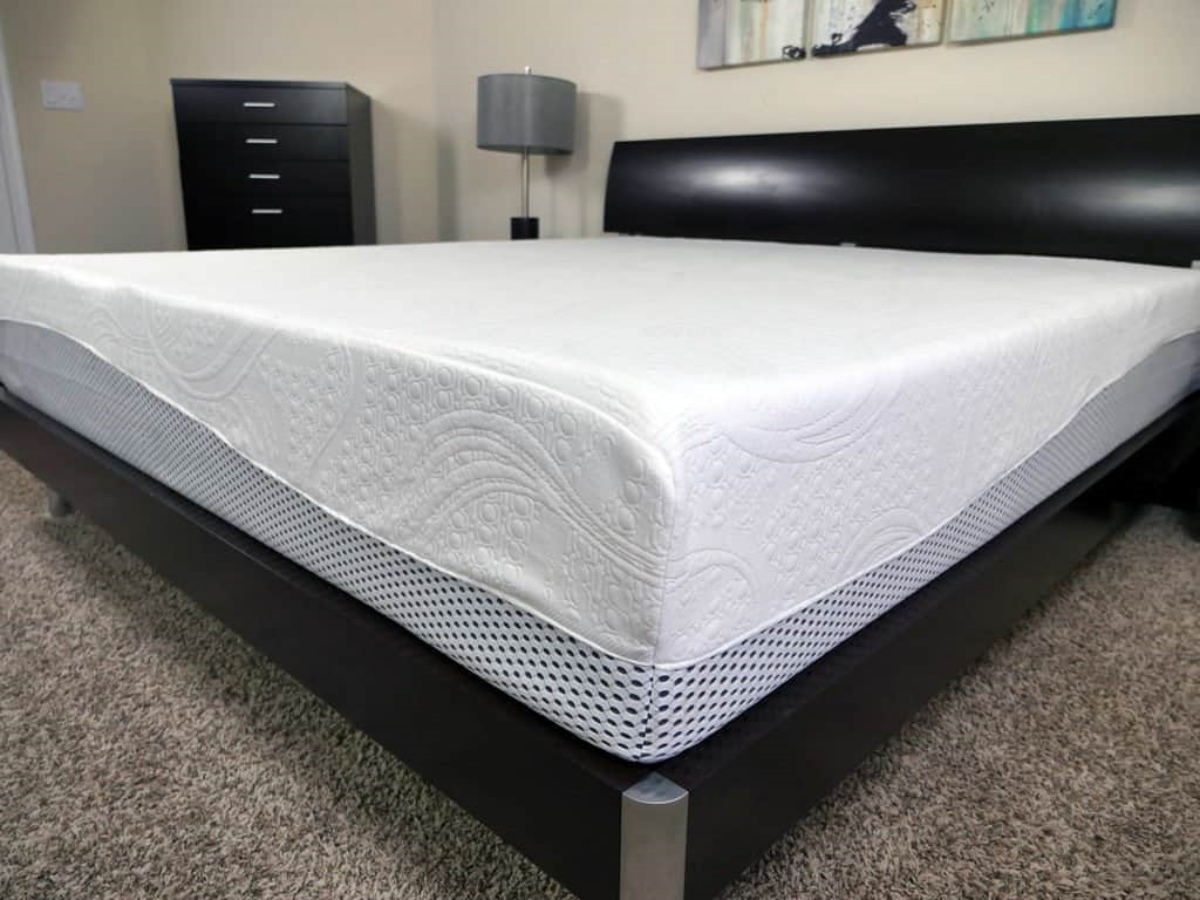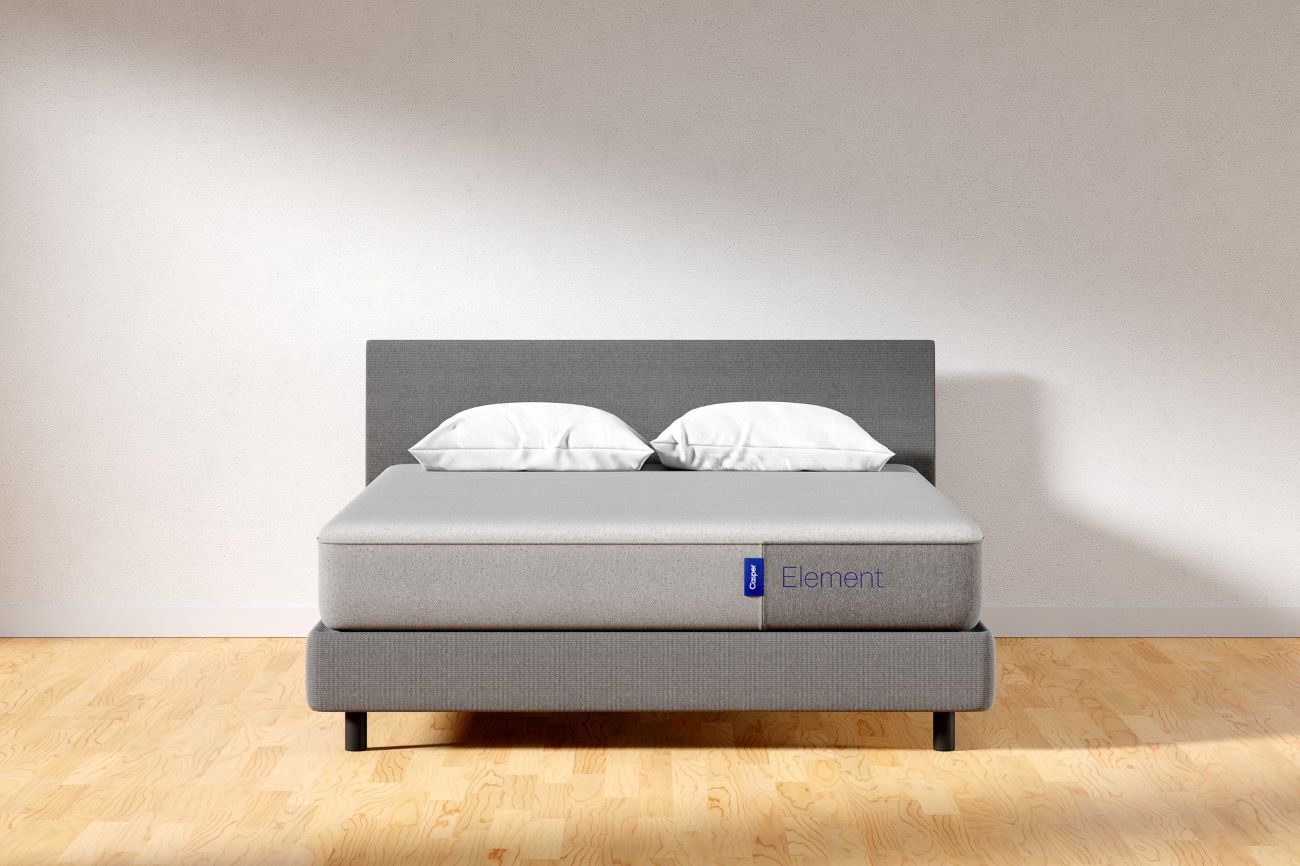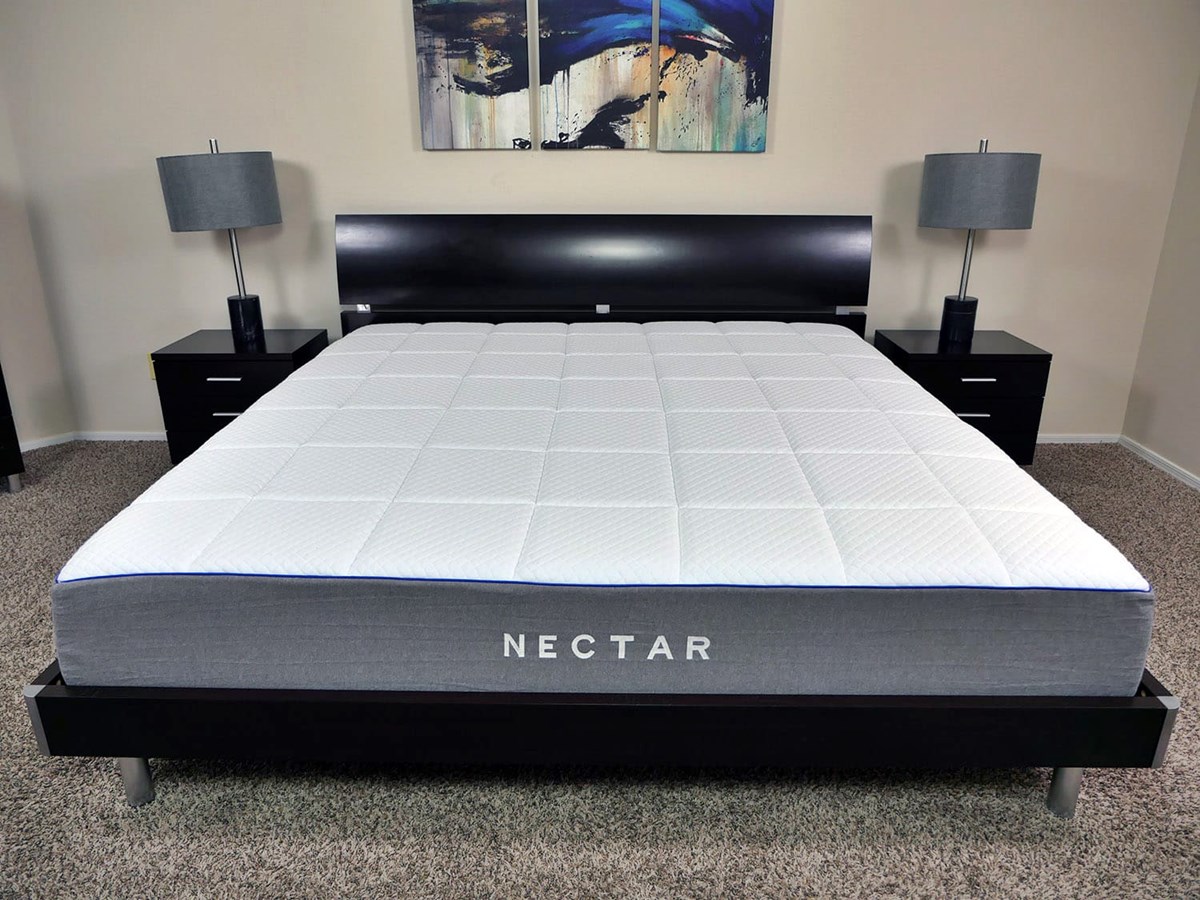Home>Furniture>Bedroom Furniture>How Long For A Foam Mattress To Expand
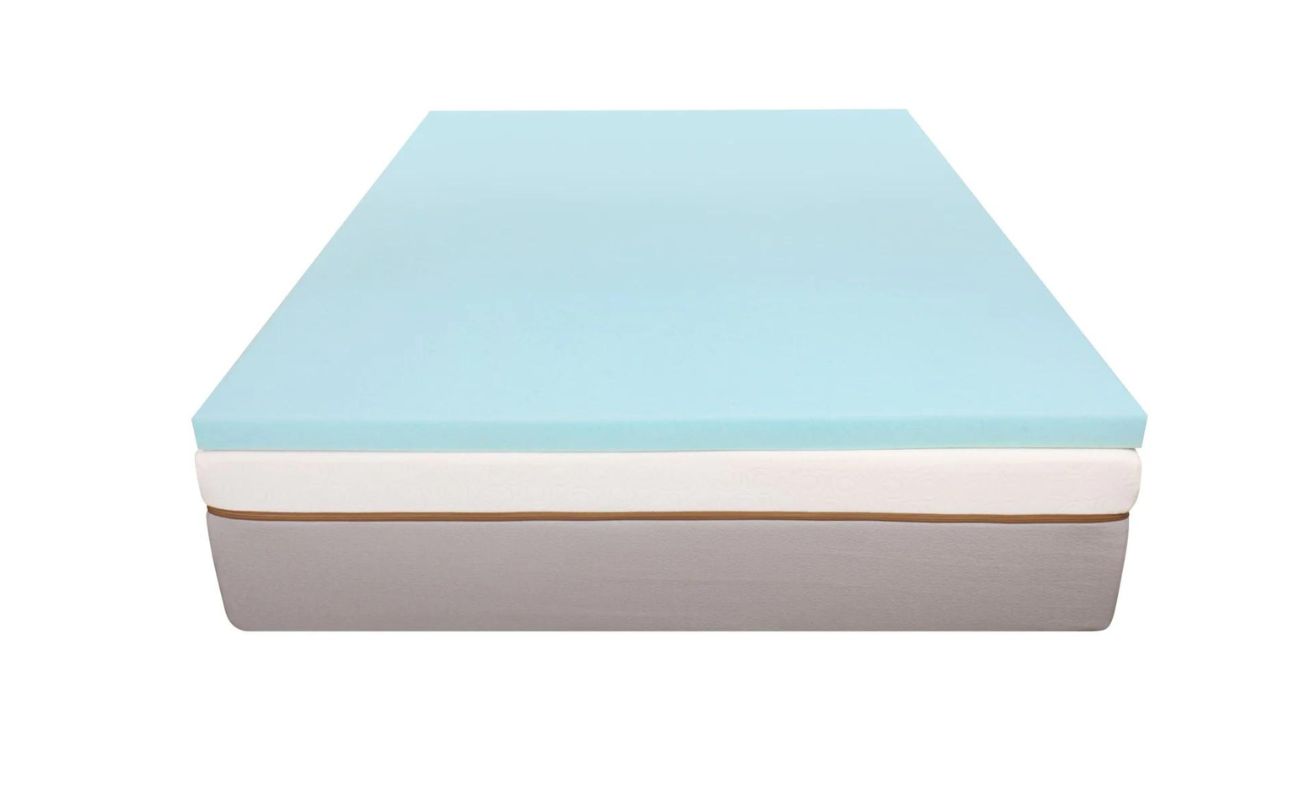

Bedroom Furniture
How Long For A Foam Mattress To Expand
Modified: April 28, 2024
Discover how long it takes for a foam mattress to fully expand and transform your bedroom with our quality bedroom furniture.
(Many of the links in this article redirect to a specific reviewed product. Your purchase of these products through affiliate links helps to generate commission for Storables.com, at no extra cost. Learn more)
Introduction
Getting a new foam mattress is exciting, but one common concern among buyers is how long it takes for the mattress to fully expand. Foam mattresses, particularly those made of memory foam or latex, are typically compressed and packaged for shipping. When you receive a new foam mattress, it may initially appear smaller and flat due to this compression. However, given the right conditions, the mattress will gradually expand to its intended size and shape.
The expansion time of a foam mattress can vary depending on several factors. In this article, we will explore these factors and provide guidelines on how long it generally takes for a foam mattress to expand. This will help you plan and prepare for the optimal sleeping experience once your new mattress arrives.
Key Takeaways:
- Foam mattresses, including memory foam, gel foam, latex foam, and polyurethane foam, have varying expansion times ranging from 6 to 48 hours. Factors such as temperature, humidity, and packaging influence the expansion process.
- To speed up the expansion process of a foam mattress, maintain optimal temperature and humidity, provide proper ventilation, and avoid placing weight on the mattress. Unpacking the mattress immediately and being patient are also crucial for optimal expansion.
Read more: How To Get A Memory Foam Mattress To Expand
Factors Affecting Expansion Time
The time it takes for a foam mattress to fully expand can be influenced by various factors. These factors can include the type of foam mattress, the thickness of the mattress, temperature and humidity, and the packaging and compression method used during shipping. Let’s take a closer look at each of these factors:
- Type of Foam Mattress: Different types of foam, such as memory foam, gel foam, or latex foam, may have slightly different expansion times. Memory foam, for example, is known for its slow recovery and may take longer to regain its full shape compared to other foam types.
- Thickness of the Mattress: Thicker foam mattresses generally need more time to expand fully compared to thinner ones. This is because there is more material that needs to decompress and regain its original form.
- Temperature and Humidity: Environmental conditions can affect the expansion time of a foam mattress. Higher temperatures and humidity levels can help facilitate the expansion process by softening the foam materials. Conversely, cooler temperatures may slow down the expansion process.
- Packaging and Compression: The way the mattress is packaged and compressed for shipping can impact the expansion time. Some mattresses are tightly compressed and vacuum-sealed, while others may be looser. The more tightly compressed a mattress is, the longer it may take to fully expand.
It’s important to keep in mind that these factors are not absolute and can vary from mattress to mattress. While some mattresses may expand quickly within a few hours, others may take up to several days to reach their full size. Now that we understand the factors involved, let’s move on to discussing a general timeline for foam mattress expansion.
Type of Foam Mattress
When it comes to foam mattresses, there are various types available in the market. Each type has its own characteristics, including different expansion times. Let’s take a closer look at some common types of foam mattresses:
- Memory Foam: Memory foam mattresses are known for their contouring and pressure-relieving properties. They are designed to conform to the shape of your body, providing excellent support and comfort. Memory foam mattresses typically have a slower expansion time due to their dense and viscoelastic nature. It’s not uncommon for a memory foam mattress to take anywhere from 24 to 48 hours to fully expand.
- Gel Foam: Gel foam mattresses are infused with gel particles, which help regulate temperature and provide additional support. These mattresses often have a similar expansion time as memory foam mattresses.
- Latex Foam: Latex foam mattresses are made from natural or synthetic latex materials. They are known for their responsiveness, breathability, and durability. Latex foam mattresses tend to have a faster expansion time compared to memory foam mattresses. They may expand fully within 6 to 12 hours.
- Polyurethane Foam: Polyurethane foam mattresses are a more affordable option and are commonly used in budget-friendly mattresses. They have a moderate expansion time, typically ranging from 12 to 24 hours.
It’s important to note that these are general guidelines, and the actual expansion time may vary depending on the specific brand, model, and thickness of the mattress. It’s always a good idea to refer to the manufacturer’s instructions or guidelines for the most accurate information on expansion time.
Now that we have discussed the type of foam mattresses, let’s move on to the next factor that can affect the expansion time: the thickness of the mattress.
Thickness of the Mattress
The thickness of a foam mattress can play a role in how long it takes to fully expand. Generally, thicker mattresses require more time for the foam to decompress and regain its full shape. Let’s explore how mattress thickness can impact expansion time:
1. Thin Mattresses: Foam mattresses with a thickness of around 6 to 8 inches may expand relatively quickly. In many cases, they can reach their full size within 6 to 12 hours. However, this can vary depending on the type of foam and other factors.
2. Medium Thickness: Mattresses ranging from 8 to 10 inches in thickness may take a bit longer to fully expand. It’s not uncommon for these mattresses to require 12 to 24 hours for complete expansion. Again, this may vary based on the specific mattress and its materials.
3. Thick Mattresses: Foam mattresses that are 10 inches or thicker will generally have a longer expansion time. The additional layers of foam and materials make it necessary for the mattress to take its time to fully expand. It’s not uncommon for thick mattresses to require 24 to 48 hours or more to reach their intended size and shape.
Keep in mind that these are general guidelines, and the actual expansion time can vary depending on the specific mattress and its construction. It’s best to refer to the manufacturer’s instructions or guidelines for a more accurate estimate of how long it will take for your specific mattress to expand fully.
Now that we understand how mattress thickness can impact expansion time, let’s move on to the next factor: temperature and humidity.
Temperature and Humidity
Believe it or not, the temperature and humidity levels in your environment can affect the expansion time of a foam mattress. Here’s how these factors come into play:
1. Temperature: Higher temperatures can help accelerate the expansion process of a foam mattress. Warmer environments soften the foam materials, making it easier for them to decompress and regain their shape. If you’re looking to speed up the expansion time, consider keeping the room at a comfortable temperature between 70 to 80 degrees Fahrenheit (21 to 27 degrees Celsius).
Conversely, cooler temperatures can slow down the expansion process. If your room is on the colder side, it may take a bit longer for the foam mattress to fully expand. However, keep in mind that extreme heat or freezing temperatures should be avoided, as they can potentially damage the foam materials.
2. Humidity: Humidity levels can also impact the expansion time of a foam mattress. Moderate humidity levels can help facilitate the expansion process. Dry environments, on the other hand, may slightly delay the expansion. If you live in a particularly dry area, you can consider using a humidifier in the room to maintain optimal humidity levels.
It’s important to note that while temperature and humidity can influence the expansion time, they are not the sole determinants. Other factors, such as the type and thickness of the mattress, also play a significant role in the overall expansion process.
Now that we’ve discussed the impact of temperature and humidity, let’s move on to the next factor that can affect the expansion time: packaging and compression.
Most foam mattresses will expand to their full size within 24-48 hours of being unpackaged. To speed up the process, you can gently massage and fluff the mattress to help it expand more quickly.
Read more: How Long For A Novaform Mattress To Expand
Packaging and Compression
The way a foam mattress is packaged and compressed for shipping can have an impact on its expansion time. Let’s delve into the specifics of packaging and compression and how they affect the expansion process:
1. Tightly Compressed and Vacuum-Sealed: Many foam mattresses are tightly compressed and vacuum-sealed to reduce their size for shipping convenience. This compression allows the mattress to be more compactly packaged and easily transported. However, tightly compressed mattresses often require more time to fully expand. It can take anywhere from 24 to 48 hours for these mattresses to decompress, regain their shape, and reach their intended size.
2. Loosely Packed: Some foam mattresses may be packed and shipped without excessive compression or vacuum-sealing. These mattresses tend to expand more quickly, typically reaching their full size within 6 to 12 hours. The relatively looser packaging allows the foam materials to decompress more easily.
It’s important to follow the manufacturer’s instructions regarding unpacking and expanding the mattress. This ensures that you give the mattress ample time to expand properly and reduce the risk of any potential damage.
In addition, it’s worth noting that the odor associated with new foam mattresses, often referred to as off-gassing, may be more noticeable with tightly compressed mattresses. This odor is temporary and should dissipate within a few days. Proper ventilation of the room can help speed up the process.
Remember that these are general guidelines, and the actual expansion time can vary depending on the specific mattress and its packaging. It’s always a good idea to refer to the manufacturer’s instructions or guidelines for the most accurate information.
Now that we’ve explored the impact of packaging and compression on expansion time, let’s move on to discussing the general guidelines for foam mattress expansion.
Expansion Time Guidelines
While the specific expansion time for a foam mattress can vary based on various factors, here are some general guidelines to give you an idea of what to expect:
1. Memory Foam Mattresses: Memory foam mattresses typically have a slower expansion time due to their dense and viscoelastic nature. It’s not uncommon for them to take 24 to 48 hours to fully expand. However, some memory foam mattresses may expand more quickly, while others may take slightly longer.
2. Gel Foam and Latex Foam Mattresses: Gel foam and latex foam mattresses often have similar expansion times to memory foam mattresses. They may also take around 24 to 48 hours to fully expand. However, some latex foam mattresses may expand more quickly, typically within 6 to 12 hours.
3. Polyurethane Foam Mattresses: Polyurethane foam mattresses, which are commonly used in budget-friendly options, typically have a moderate expansion time. They usually take around 12 to 24 hours to fully expand.
It’s important to remember that these are general guidelines, and the actual expansion time can vary based on factors like the thickness of the mattress, temperature, humidity, packaging, and compression. Always refer to the manufacturer’s instructions or guidelines for the most accurate estimate of how long it will take for your specific foam mattress to expand fully.
Now that you have an idea of the typical expansion times, let’s explore some tips for speeding up the expansion process.
Tips for Speeding up the Expansion Process
While the natural expansion time of a foam mattress depends on various factors, there are a few tips you can follow to help speed up the process:
- Unpack the Mattress Immediately: When you receive your foam mattress, it’s best to unpack it as soon as possible. Remove it from its packaging and allow it to breathe and decompress in a well-ventilated room.
- Optimal Temperature and Humidity: Maintain a room temperature between 70 to 80 degrees Fahrenheit (21 to 27 degrees Celsius) and moderate humidity levels. These conditions promote faster expansion.
- Remove Obstacles: Ensure that there are no objects or barriers inhibiting the expansion of the mattress. Make sure there is ample space for it to expand freely.
- Avoid Applying Weight: Try not to place any heavy items or apply pressure on the mattress during the expansion process. This can hinder its ability to fully regain its shape.
- Allow Proper Ventilation: Provide good airflow in the room by opening windows or using fans. This helps to remove any lingering odors or moisture and aids in the expansion process.
- Be Patient: While it can be tempting to immediately use the mattress, it’s crucial to allow it sufficient time to expand fully. Rushing the process may compromise the mattress’s durability and performance.
By following these tips, you can help optimize the expansion time of your foam mattress and ensure that it reaches its full size and shape more efficiently.
Remember, the exact time it takes for a foam mattress to expand may still vary depending on several factors. It’s essential to refer to the manufacturer’s instructions or guidelines for specific information about your mattress’s expansion time and care recommendations.
Now that we’ve covered tips for speeding up the expansion process, let’s conclude our discussion on foam mattress expansion.
Conclusion
When you purchase a foam mattress, it’s natural to wonder how long it will take to fully expand. The expansion time of a foam mattress can vary based on factors such as the type of foam, mattress thickness, temperature and humidity, and packaging and compression. Understanding these factors can help you set realistic expectations and make the most of your new mattress.
Memory foam mattresses, gel foam mattresses, latex foam mattresses, and polyurethane foam mattresses all have different expansion times. Memory foam mattresses often take the longest to fully expand, ranging from 24 to 48 hours. On the other hand, latex foam mattresses typically have faster expansion times, completing the process within 6 to 12 hours.
Factors like temperature and humidity can also influence the expansion process. Warmer temperatures and moderate humidity levels can accelerate the expansion, while cooler temperatures and dry environments may slow it down. Additionally, mattresses that are tightly compressed and vacuum-sealed for shipping may take longer to reach their full size compared to those that are loosely packed.
To speed up the expansion process, you can unpack the mattress immediately, maintain optimal temperature and humidity conditions, provide proper ventilation, and avoid placing weight on the mattress. However, it’s important to be patient and allow sufficient time for the mattress to fully expand, as rushing the process may affect its durability and performance.
Remember to consult the manufacturer’s instructions or guidelines specific to your foam mattress for the most accurate information on expansion time and care recommendations.
In conclusion, understanding the factors affecting foam mattress expansion and following the necessary steps and guidelines will ensure that you have a comfortable and fully expanded mattress to enjoy for years to come.
Frequently Asked Questions about How Long For A Foam Mattress To Expand
Was this page helpful?
At Storables.com, we guarantee accurate and reliable information. Our content, validated by Expert Board Contributors, is crafted following stringent Editorial Policies. We're committed to providing you with well-researched, expert-backed insights for all your informational needs.

